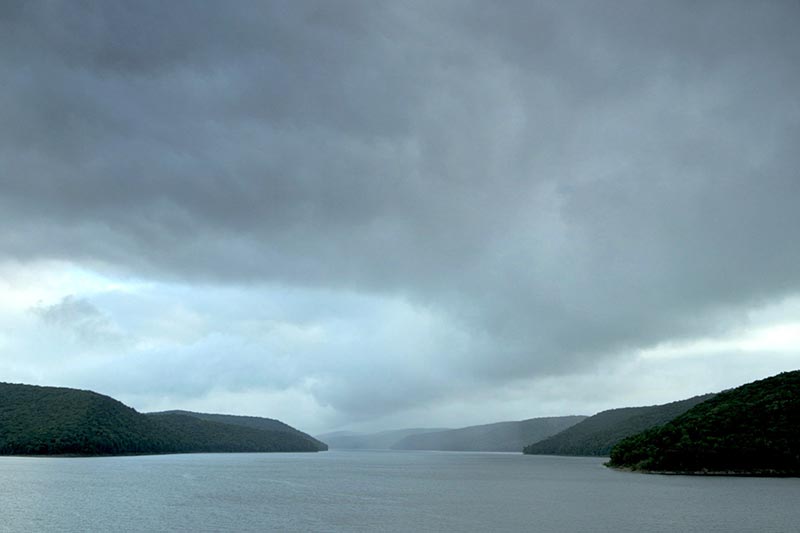
Allegheny Reservoir. Photo courtesy of Scott Sackett.
Lake of Betrayal, a documentary that explores the history of Kinzua Dam and its effect on the Seneca Indians whose lands were taken for the reservoir, will be shown at Geneseo’s Riviera Theater on Wednesday, Nov. 15 at 7 p.m. A Q&A session with the filmmakers Scott Sackett, Paul Lamont, and Caleb Abrams, and SUNY Distinguished Professor of History Michael Oberg, will follow the screening. The event is free and open to the public.
“’Lake of Betrayal’ looks at how Kinzua Dam affected the Senecas’ way of life, and the hidden agenda and political debts behind the United States government’s abrogation of the Canandaigua Treaty of 1794 which guaranteed the Seneca Nation the free use and enjoyment of its lands, forever,” says Paul Lamont, the film’s director.
In 1965 the Senecas lost more than 10,000 acres, one-third of their treaty-protected land on the Allegany Territory and the adjacent Cornplanter Tract which had been given by the State of Pennsylvania to Chief Cornplanter and his descendants, by the construction of Kinzua Dam. The project forced the removal of more than 130 Seneca families from their homes and property.
The film is set against a backdrop of the post-WWII federal policy known as “Indian Termination,” which attempted to assimilate Native Americans into mainstream society. From the mid-1940s to the mid-1960s, more than 100 tribes were “terminated,” and their members were stripped of their federal recognition as Native Americans.
“The Seneca were also slated for termination,” says the film’s producer, Scott Sackett. “In their settlement agreement with the U.S. government for the Kinzua Dam was a rider clause which required them to be terminated by 1967.” He says, “The film takes a long view of how the Seneca people responded to and overcame this tragedy that began just over 50 years ago. And it also raises pressing questions about mainstream America’s beliefs and attitudes about Native Americans that are relevant today.”
Lamont adds that the film is also important because it captures the stories of those who can recall life before the dam was built. “Seneca elders speak of Kinzua through a raw mixture of anger and tears,” he says. “With each generation, though, the memory fades a little more as younger Seneca feel little or no connection to the profound sense of loss that their elders feel.”
Support for the event was provided by the Departments of History, English, Anthropology, and Geography, and the Office of the Provost.
Author
Monique Patenaude, PhD
Executive Director of Content Strategy & Media Relations
(585) 245-5056
Related Stories
No post found!
